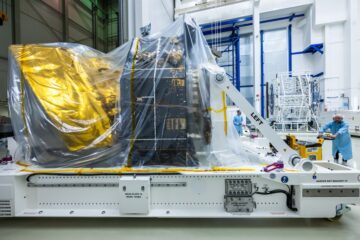Article written by: Professor Gerry Doyle, Astronomer in Armagh Observatory and Planetarium
The Daniel K. Inouye Solar Telescope (DKIST) is under construction on the summit of Haleakalā on Maui, Hawaii. Since DKIST will be observing the Sun’s corona, the sky above the telescope needs to be as free of dust, aerosols and pollutants. The isolated islands of Hawaii provide optimal conditions for clear, “coronal skies”. Armagh Observatory and Planetarium got involved in this project 3-4 years ago when via a special call from out funding department, we applied for and received £100k to assist in building the detectors for three of the instruments on DKIST. In collaboration with Queens we set-up a UK DKIST consortium who received funding from STFC. Coupled with funding from the various UK universities and Andor Technology we raised in excess of £4m, most of which goes into the N. Ireland economy. A beta-type detector has already been delivered to DKIST with the final detector due early next year. First light is early 2020.
With it’s 4m mirror and in conjunction with active optics plus a high-order adaptive optics system, DKIST will allow us to obtain observations with a spatial resolution of 30km that can address a variety of key topics relating to the physics of spicules, lifecycle of prominences, multilayer magnetometry, atmospheric heating, and coronal waves. Magnetic fields, radiation transfer, and plasma dynamics play increasingly important and complex roles in the physics of the Sun as we move from the solar photosphere through the chromosphere and into the corona. The magnitude and direction of the magnetic fields in the solar atmosphere are assumed, but unmeasured. The flow and deposition of energy in different regions of the solar atmosphere has been modelled and predicted, but current observations support a variety of interpretations. The large aperture and low scattering optics of the DKIST telescope, combined with the superb dark skies of Haleakala and the first-light instrumentation available, make DKIST uniquely able to perform critical observations of the transition between these layers of the solar atmosphere.
Armagh astronomers are currently preparing observing sequences on a range of science questions, some of which will be run at “first light”. Watch this space.






0 Comments